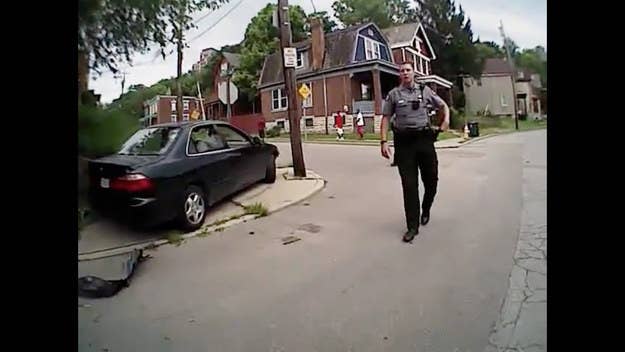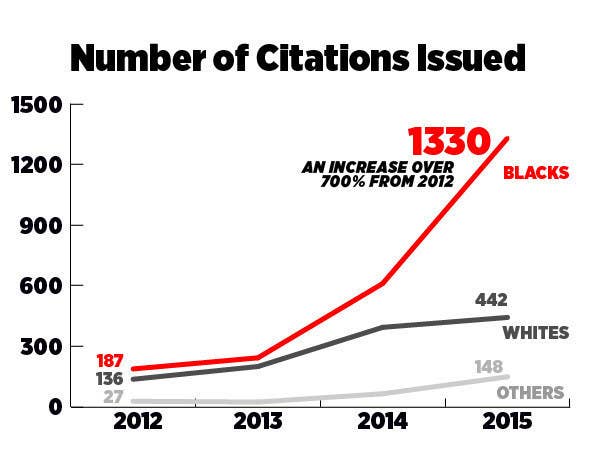
The official charged with reforming the University of Cincinnati police force following the fatal shooting of Samuel DuBose, an unarmed black man half a mile from campus, tells BuzzFeed News that she believes the force has "enhanced" safety on and around the school.
"We did a lot to enhance the safety of our students," said Robin Engel, the criminal justice professor who was named the university's Vice President of Safety and Reform following the DuBose shooting. "There's a lot of fear among students. We have to address not only actual crimes, but perception of crime as well."
In the days following the shooting, the university responded by quickly denouncing Tensing's actions, firing him, and appointing Engel to lead the "top-to-bottom" review process into the UCPD. It was Engel's research that produced the data showing racial disparities in UCPD arrest and citation numbers. But in an interview with BuzzFeed News this week, Engel said that the numbers themselves didn't prove the department was racially biased, and that she intended to withhold judgement until an official assessment of the department is complete.
"It could possibly be that they target black people, but there could be a host of other things going on," Engel said. "We would like to get to the bottom to establish if we're involved in biased policing."
As BuzzFeed News reported earlier this month, UCPD officers have issued three times more citations to black people than to white people in 2015, even though the school is predominantly white and the communities around it are evenly mixed, with some neighborhoods majority black and some neighborhoods majority white.
The disparities in the arrest and citation numbers are recent. In 2012, UCPD officers issued 136 citations to white people and 187 citations to black people. In 2015, through July 27, UCPD officers have issued 442 citations to white people and 1,330 citations to black people. Over that same time period, the number of UCPD arrest charges against white people decreased from 163 to 142, while the number of UCPD arrest charges against black people increased from 237 to 308.
The UCPD's shift in enforcement strategy stemmed from an uptick in robberies of students in 2013, Engel said. In October of that year, University of Cincinnati President Santa Ono announced an "effort to enhance and expand a visible police presence" by increasing "patrols within targeted areas of concern."
UCPD has since "nearly doubled in size," Engel said. At the same time, the university increased the number of cameras and street lights around campus.

But bolstering the role of the UCPD was not the University's Plan A, according to Engel. Initially, she said, the university asked the Cincinnati Police Department to increase staffing and patrols in the area around the campus. "But [the university] didn't get it, so they increased UCPD patrols, in partnership with the CPD," she said. "There was a void with the Cincinnati Police Department in their ability to patrol these neighborhoods."
The off-campus policing strategy, she said, was "high visibility." The result has been a dramatic increase in enforcement: UCPD conducted 615 traffic stops in 2012 versus 2,028 through the first seven months of 2015. And there has also been a sharp drop in crime: in 2014, Part 1 crime (homicide, forcible rape, robbery, aggravated assault) was down 18% compared the the yearly average of the previous five years, and police were identifying suspects at a much higher rate.
"We were finding that most of the offenders were driving into the university community and were specifically targeting students for street robberies," Engel said. "If we know that we have particular individuals who are driving into these neighborhoods and specifically targeting students for street robberies, if we increase traffic stops in those areas, we increase the likelihood of engaging with individuals coming in to commit those offenses."
This strategy, Engel argued, explains why a university police officer might pull over a driver for a missing front license plate half a mile from campus, which was Tensing's reason for pulling over DuBose.
It is this role in the outside community that has drawn scrutiny in the weeks following Dubose's death. When asked about UCPD's role off-campus, Engel said, "the overall mission is for the safety of students, faculty, staff, and visitors of the campus."
Yet while the department's role is to protect and serve the university community, its enforcement has fallen on local residents who are not part of the university. Unlike the city police department, the UCPD is accountable to the school and not to the people it predominantly targets.
Before Dubose's death, Engel said, the university had "never heard complaints about UCPD being too harsh." The only complaints President Ono heard, she added, were about "the need for more public safety" and those mostly came from "concerned students and parents who talk to him." The administration, she said, had not gotten any complaints about the UCPD from locals in the neighborhoods surrounding the campus.
Whether or not the university received any complaints, several local residents told BuzzFeed News earlier this month that UCPD had "harassed" them for years.
"It's like they want to keep us away, make sure we stay where they want us to stay," one young man said. "We more shook by college campus police officers than the Cincinnati police."
Asked whether the University offered any specific pathway for locals to provide feedback about the campus police, Engel note that Ono is "very visible and accessible" and that community leaders are consulted about policing strategy. But as for a formal system by which locals could file complaints: "that's one of the things we need to review."
